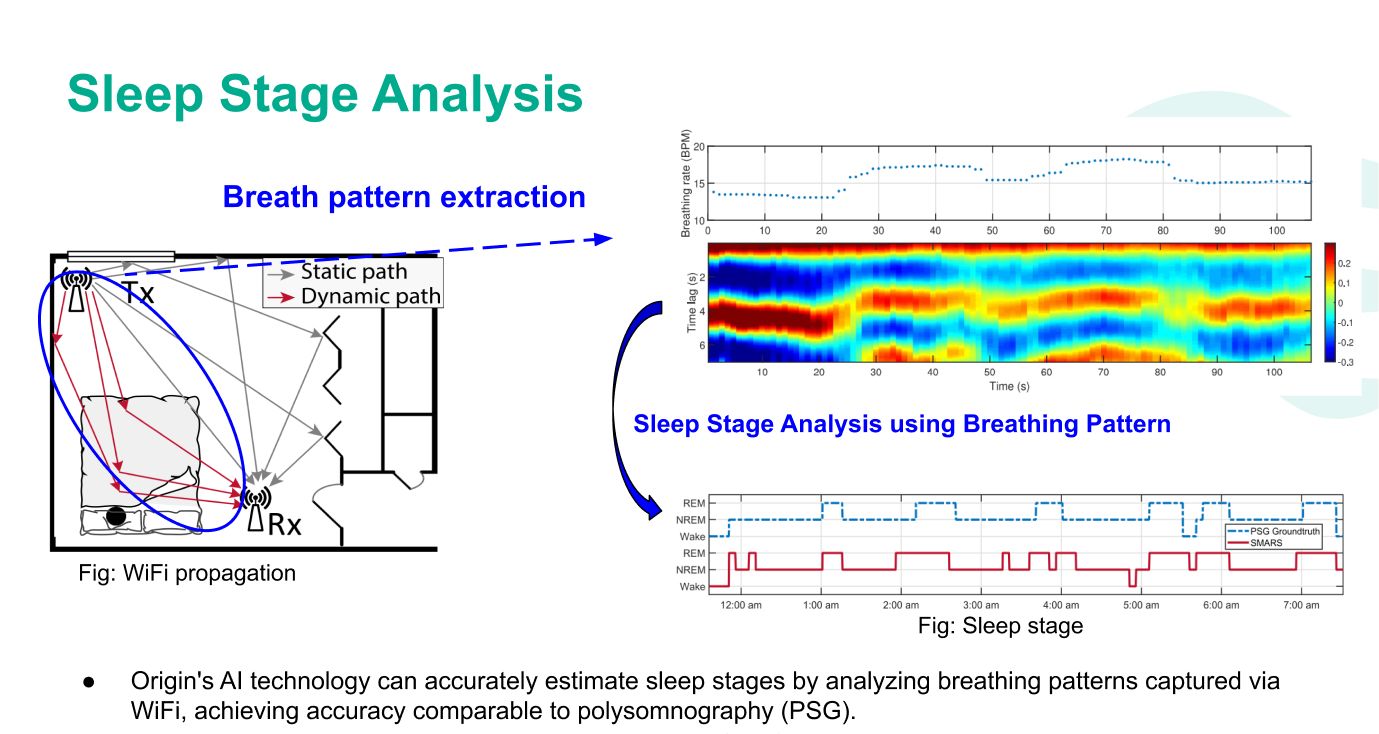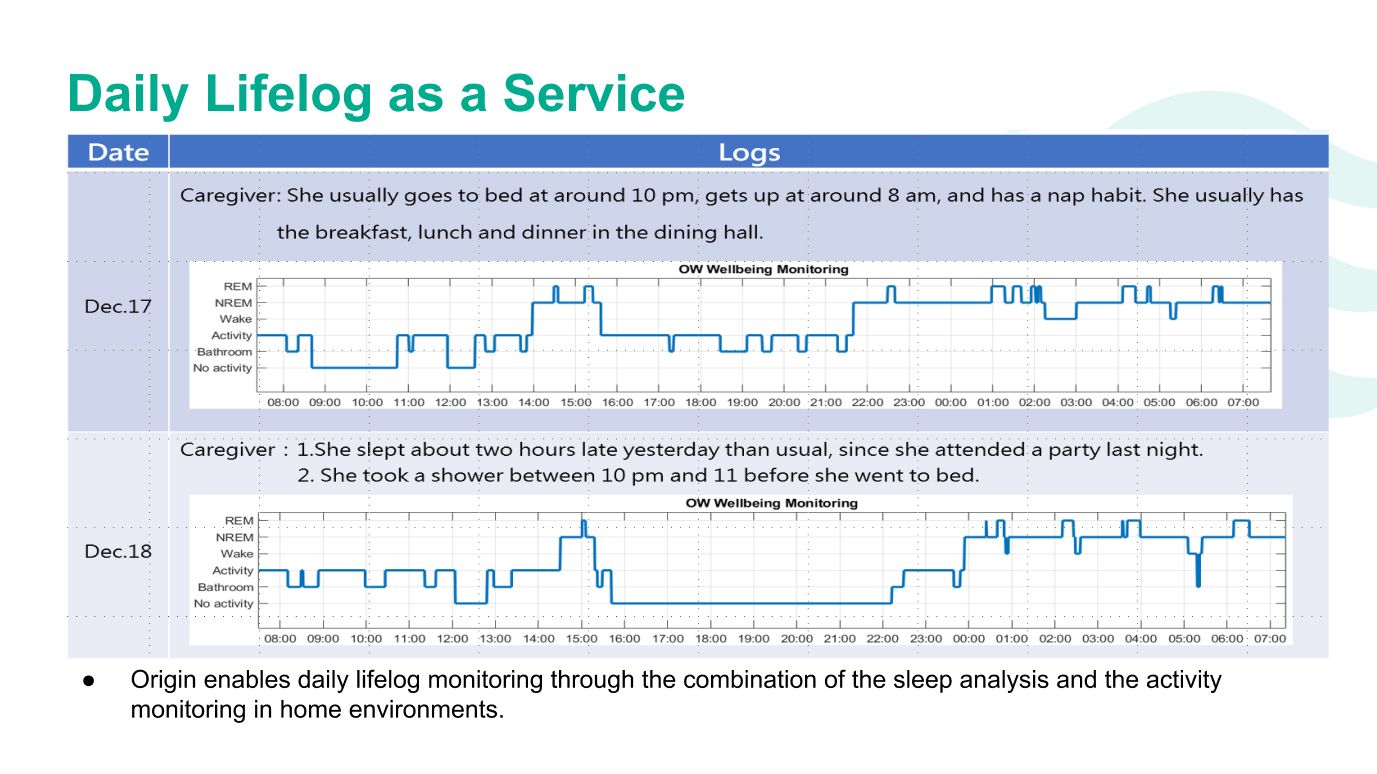Wireless Sensing Technology
Our team has developed a suite of advanced wireless sensing technology with many applications. Some selected samples are described below.
Human Identification
Origin’s technology proved the existence of radio biometrics. The wireless propagation around the human body is affected by its physical and biological characteristics. The human-affected wireless signals thus encode identity information, which can serve as a biometric to differentiate between people. By analyzing the pattern of the WiFi signal propagation in the form of channel state information (CSI), our technology can identify up to a dozen people, even through the walls, using a single WiFi transmitter and receiver pair. Human radio biometrics enable numerous applications in smart home and office environments as well as in smart automobiles.
View the seamless integration of Origin’s wireless sensing technology in automotive environments with our demo video showcasing human identification technology in cars.
“Driver Driver Authentication for Smart Car Using Wireless Sensing” paper
“Wireless AI in Smart Car” paper
Child Presence Detection
Origin’s technology can be used to monitor the presence of occupants in a vehicle through motion and breathing detection, with high accuracy, low latency, and extensive coverage. Utilizing this technology, an unattended child inside a car can be detected with minimal false alarms.
Check out these videos showcasing this technology from Origin.
Sleep Monitoring
Origin’s AI technology enables future daily sleep monitoring in a ubiquitous, noninvasive, and contactless manner, without instrumenting the subject’s body or the bed through WiFi. It can effectively and accurately extract the breathing pattern from the radio signals based on a statistical model that accounts for all reflecting and scattering multipaths. By further analyzing the variability of the breath pattern, it can recognize sleep stages and assess the quality of sleep with comparable performance with the medical gold standard: polysomnography (PSG).
“Ambient Radio Signal Sleep Monitoring via Ambient Radio Signals” paper


Fall Detection
Falls are a major cause of injury/death in adults aged above 65 years. Origin’s AI technology presents a fall-detection system to identify a fall event and alert emergency services/caregivers. It can passively estimate the speed of indoor movements using our statistical multipath model-based approach. The environment-independent speed information and extracted acceleration patterns can be analyzed to distinguish falls from other routine activities. Our fall-detection technology attains a high detection accuracy.
Gait Recognition
Gait, an individual’s way of walking, is increasingly perceived as not only an essential vital sign but also an effective biometric marker. Origin Research developed the first system that monitors and recognizes an individual’s gait through the walls via wireless radios. It passively and unobtrusively monitors an individual’s gait speed by a single pair of commodity WiFi transceivers without requiring the user to wear any device or walk on a restricted walkway. It automatically identifies stable walking periods, extracts physically plausible and environmentally irrelevant speed features, and accordingly recognizes a subject’s gait. Built upon a distinct rich-scattering multipath model, it can capture one’s gait speed when one is >10 meters away behind the walls.
“GaitWay: Monitoring and Recognizing Gait Speed Through the Walls” paper









